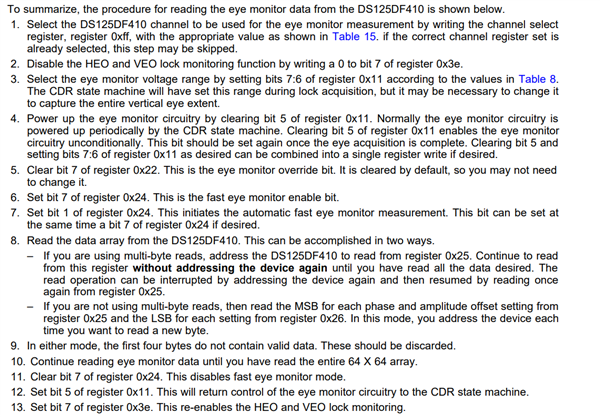Hi TI Team,
We have a few questions relating to the locking function of DS125DF410.
- What is the guaranteed VCO locking range of DS125DF410? Is it 9.8GHz ~ 12.5GHz?
- What's the relationship between Reg 0x08 (Starting VCO cap dac setting 0) and Reg 0x0B (Starting VCO cap dac setting 1)? How about Reg 0x1F (lpf_dac_val override)? How do they interact during the locking process?
- How can we instruct the CDR to lock based on a set of fixed settings (ONLY, as we know exactly what the incoming signal's data rate is) with Reg 0x08, 0x0B and 0x1F?
Thanks.
Child



